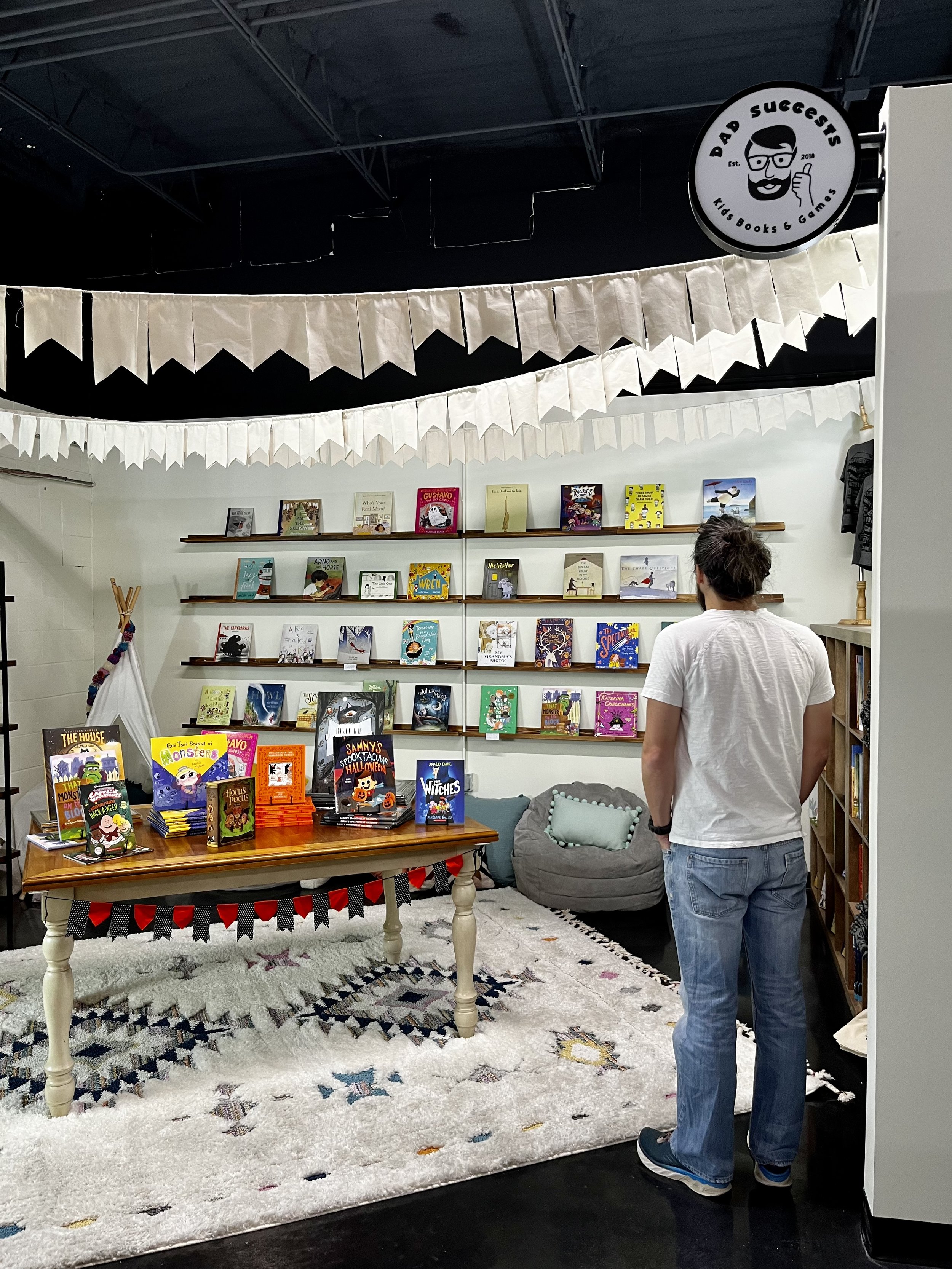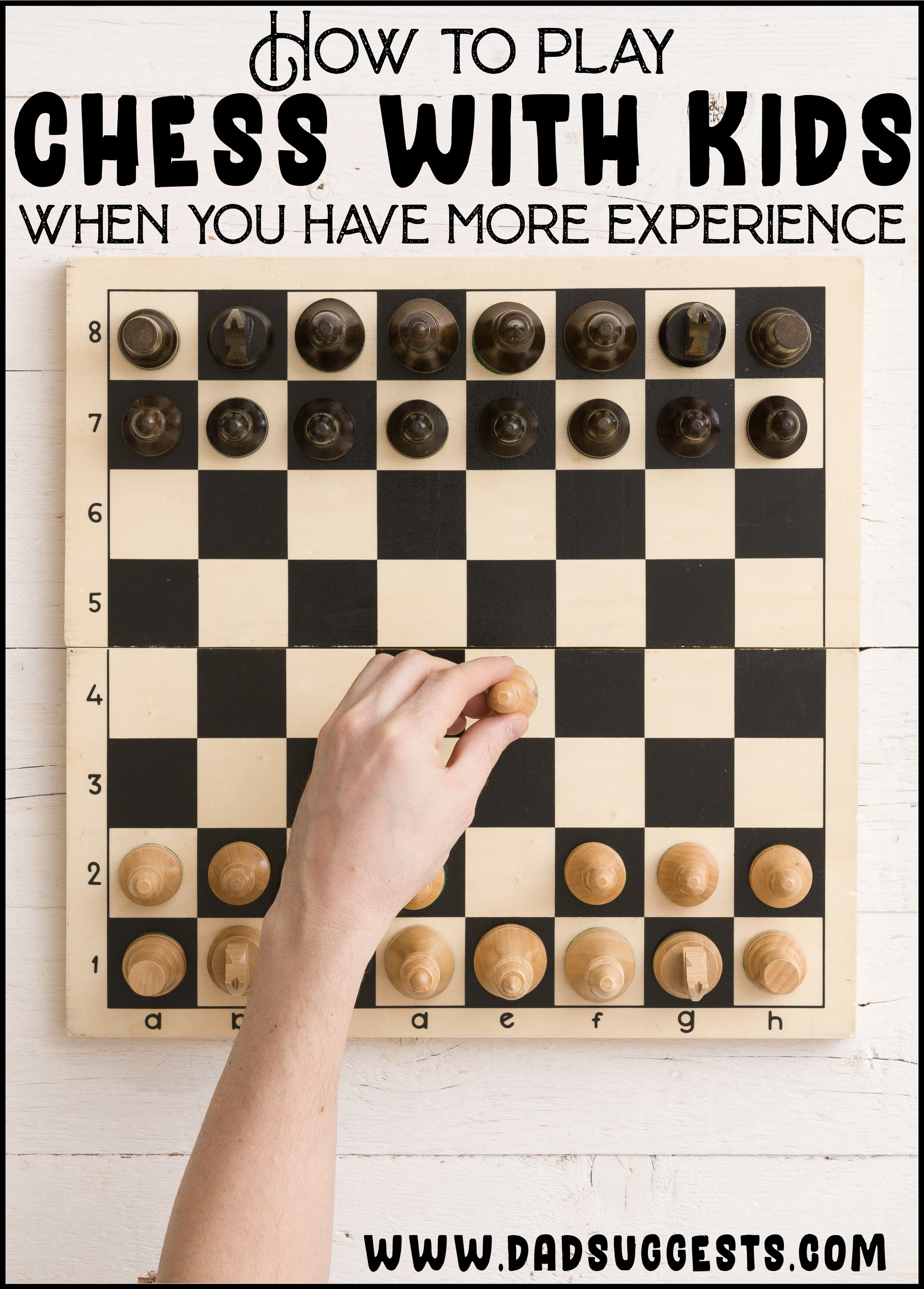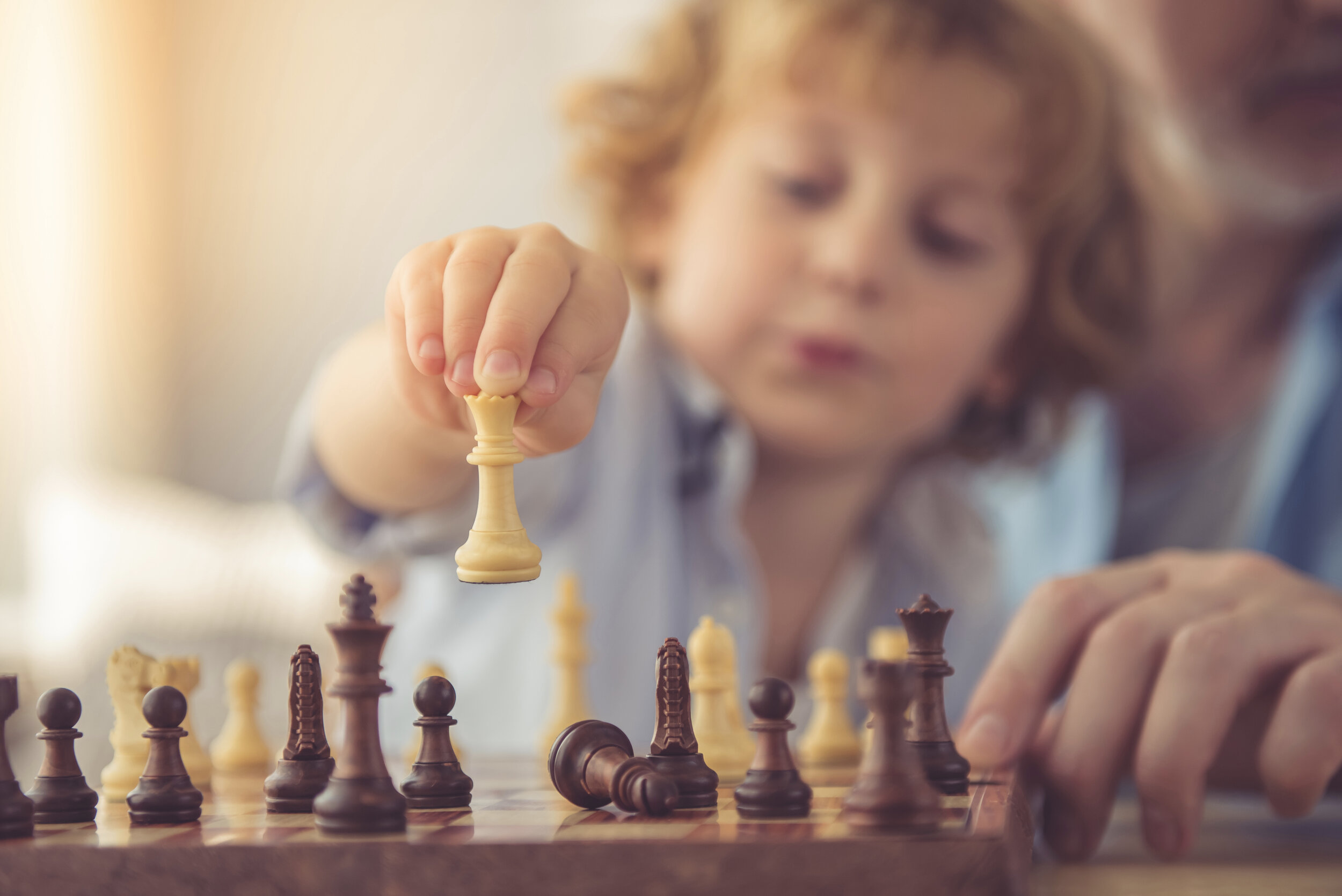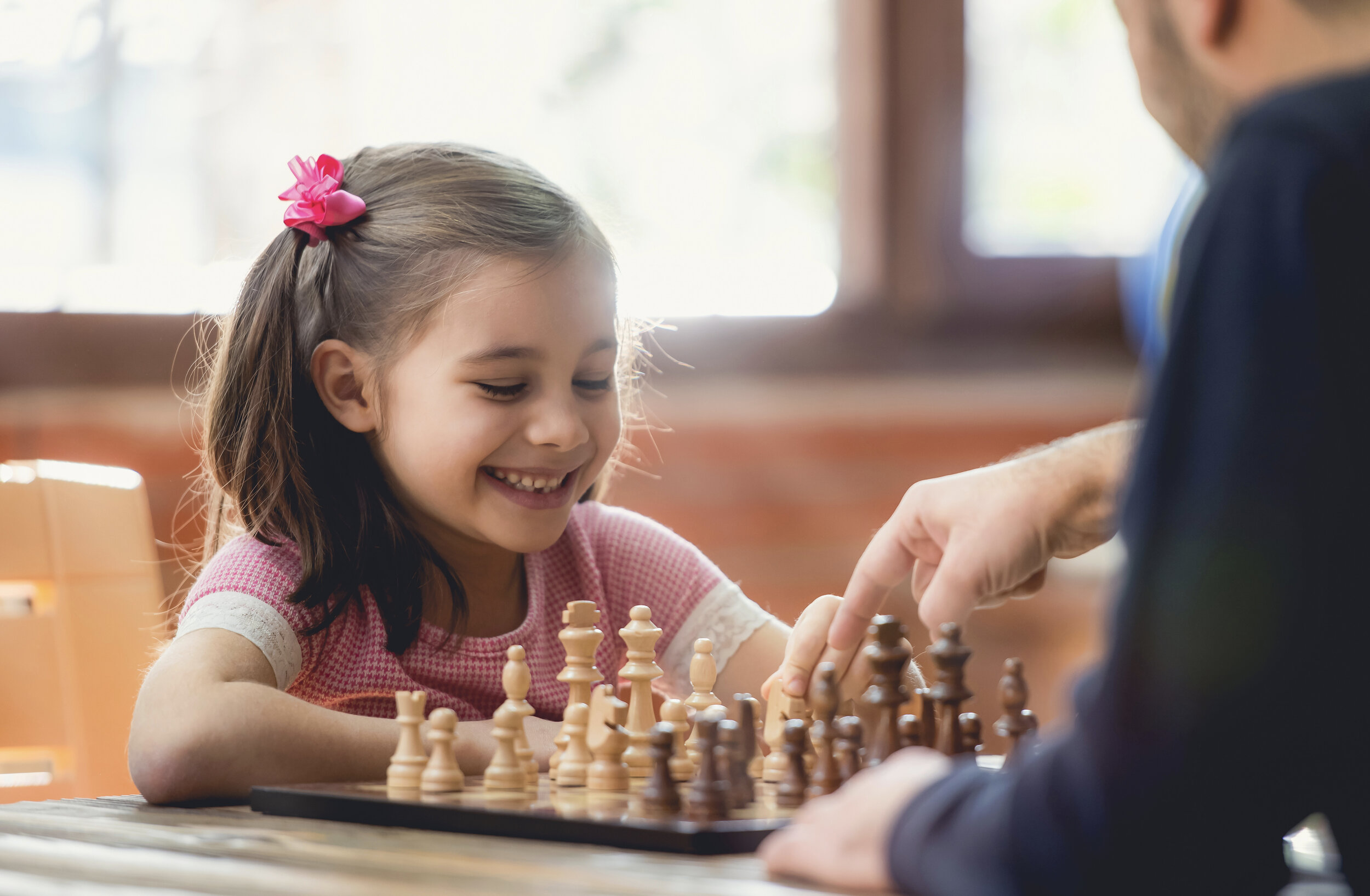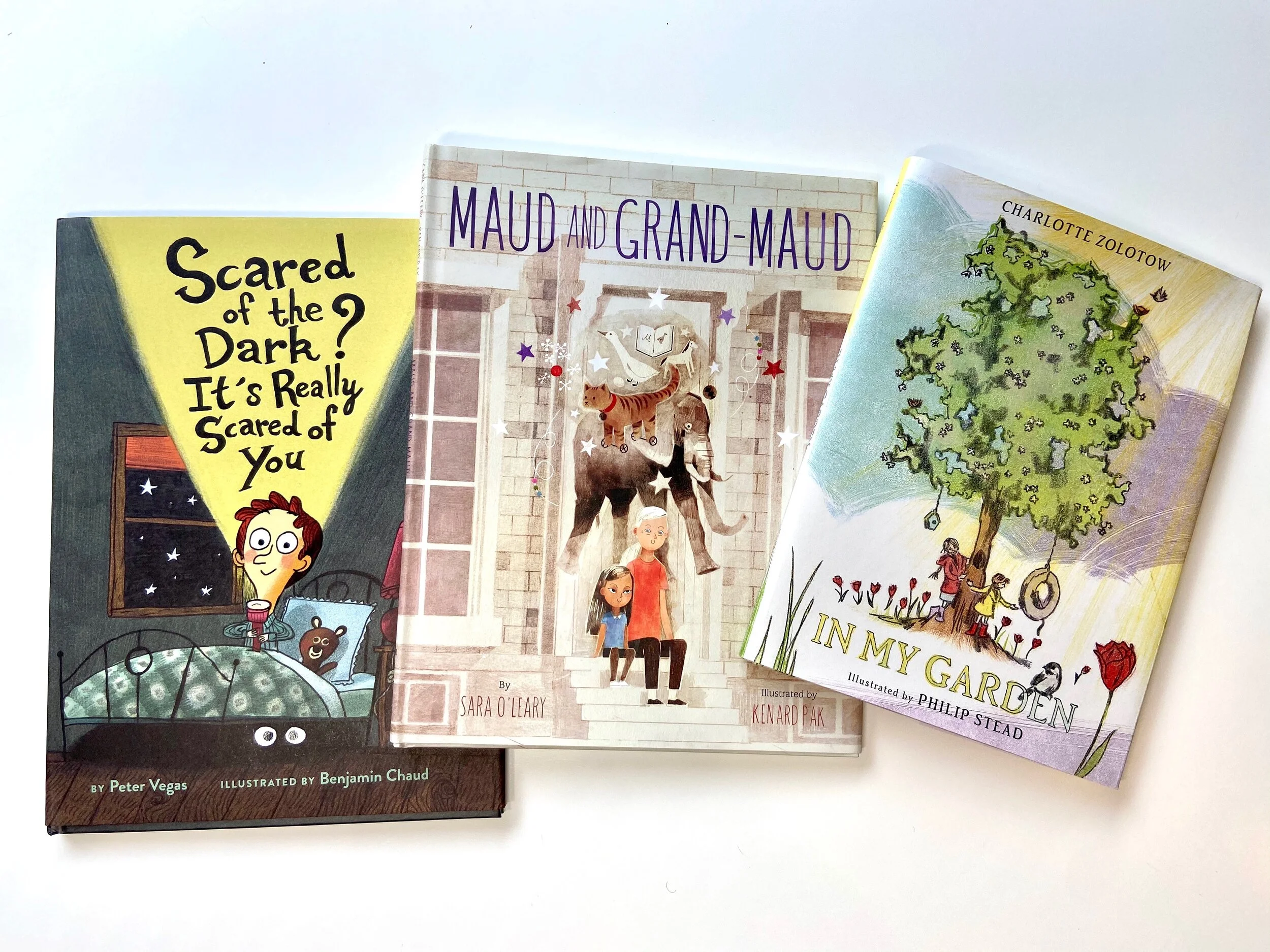How to Play Chess with Kids When You are More Experienced
Many kids love chess when they are first introduced to it. There’s something special about the mystery of the game, learning how all of the pieces move, and putting together all of your newfound knowledge to beat your opponent. Chess can simultaneously feel like both art and science, and it’s easy to become obsessed with it once you begin.
And there are a multitude of benefits for getting your kids engaged in chess. Chief among them are the targeted development of the frontal lobe, the ability to strengthen your planning and impulse control, and - perhaps my personal favorite - the wonderful opportunity to get used to losing and reflect on it an opportunity for growth.
But getting used to losing is also where the biggest hurdle always comes into play. Losing isn’t typically seen as particularly fun, and fun has to be a big part of the equation to keep anyone’s interest - especially kids. While chess can serve as an incredibly powerful lesson in growth mindset, nobody wants to lose every game they play. And good luck getting anyone interested in the game if their only experience with it is losing their first 1000 games to their dad.
So that poses the question - how are you supposed to play chess with your kids if they are just learning and you are actually pretty good? The game is as skill-based as they come, with no luck to be seen and no partners to depend upon. How can you help your kids fall in love with the game if the scales are so lopsided?
Some people subscribe to the belief that letting your kids win sometimes is the answer - but I strongly disagree, especially when it comes to a game of skill like chess. I still believe that the day my son beats me in chess will be a special occasion he will never forget, and he’ll certainly know he earned it. Instead of that, I’ve built up several ideas for leveling the playing field, nurturing his motivation, and keeping things interesting.
The best thing about these ideas is that they will work in any situation where the two players are not evenly matched - not just with young kids. They’ve worked well for me as a middle school coach when a new member is playing a veteran, and they’d work just as well with two adults playing. And, let’s not forget, it’s quite possible you are the one who needs the help beating your kids.
And, let’s also remember, there’s no substitution for the joy of playing against peers - ideally of equal strength. But that’s not always feasible, particularly with younger kids. So hopefully a few of the ideas below help keep your kids’ interest in this beautiful game while they are growing and enjoying the quality time spent with you.
How to Level the Playing Field with Beginners in Chess
1. Material Odds
Playing with material odds is by far the easiest and most basic way to level the playing field when someone is outmatched. Material odds means playing with less material than your opponent. Simply remove your own queen from the board and then play with regular rules. You might find that you need to remove even more than your queen to balance things out, and you need to do some experimenting to find the sweet spot.
Not only does material odds balance things out and keep things interesting, but it also provides a very good chess lesson as well. If the player with the queen simply looks for even trades and doesn’t blunder away any free material, they should win the game.
Of course they are still going to blunder a lot of material, but once they stop giving away free pieces and actually beat you, you can then decrease the odds to rook odds or knight odds - until the day they are ready to go toe to toe with a full army. It’s important to point out that material odds is not to be thought of as bragging, and it’s certainly more honest than losing on purpose. Instead it’s a legitimate way to have a fair and honest battle.
2. Time Odds
Similar to material odds, time odds levels the playing field by taking something away from the more experienced player - in this case their time. You’ll need a chess clock to play this way, or you could always download one on your phone. And all you have to do is give one person extra time on their clock to balance things out.
The beautiful thing about this plan is that it will eventually teach kids to actually use their time. Kids typically tend to rush things and act impulsively, and that’s exactly what they need to work on. Once they figure out that having extra time is their advantage, and they that should use it to think longer, they will have mastered an important element of chess.
Again, you will need to find the sweet spot for yourself. Maybe your child could have 10 minutes on their clock and you only have 1 minute. Before long you’ll be making chaotic mistakes and they will, hopefully, slow down and punish you for them.
3. Chess Dice
We own a few pairs of dice that have pictures of chess pieces on them, and they make for a great chess variant with kids. The idea is simple and effective. All you do is roll the dice, and then you have to move one of the pieces that you roll. The randomness that this introduces to the game definitely balances things out over the course of the game.
Even though you might be better at chess, and you might have better plans on ideas, you won’t always be allowed to execute your plans. Sometimes you’ll have a piece under attack and you won’t even be allowed to move it to safety. You and your kids will often be talking about what pieces you hope to roll, and cheering or groaning about the results. And it’s incredibly beneficial for their planning that they’re even thinking about what they want to roll and what you want to roll.
4. No Stress Chess
No Stress Chess is a game that introduces a random element to the game in much the same way that chess dice do. In this box you’ll find a set of cards with the names and pictures of different pieces, and once again you’ll be compelled to move that specific piece when you draw it, whether you want to or not.
No Stress Chess also serves as a great first chess set, because the cards - and even the board itself - serve as a reminder for how the pieces actually move. And it’s definitely worth mentioning that introducing the random element not only evens the playing field - it also significantly simplifies things for beginners. It can be paralyzing to deal with all of the options at your disposal when you first start playing, so it’s quite nice to be told which piece to move.
And having a deck of cards like this at your disposal opens up great potential for coming up with your own rules and variations. You can definitely use this set to get creative and design your own game with the kids.
5. Story Time Chess
For the youngest first-time players out there, Story Time Chess is one of the best choices out there. We even went so far as to award it the title of best board game for 4-year-olds. Not only does Story Time Chess serve as a great first chess set and a very helpful chess teacher - but it also engages kids’ imagination more than any other chess product.
At its core, Story Time Chess introduces the rules of chess to kids using engaging characters and stories - and obviously we are big fans of that approach. You can just put aside the competitive aspects of chess while you’re reading the stories and learning the rules together. And it’s also nice to solve the included puzzles cooperatively with your kids - and at their pace.
And, after they put it all together, there’s even an included mini-game that lets you play a full game of chess against your kids with missions and a point system to focus on. Each player has a hand of cards with missions to accomplish, like moving a certain piece, and earning so many points wins the game. I really love this concept for both teaching chess and leveling the playing field - and it’s inspired my son and I to come up with our own missions to add to the deck.
Do you play chess with your kids? Have you tried any of these ideas before? How do they like to play against you? Let us know in the comments!
